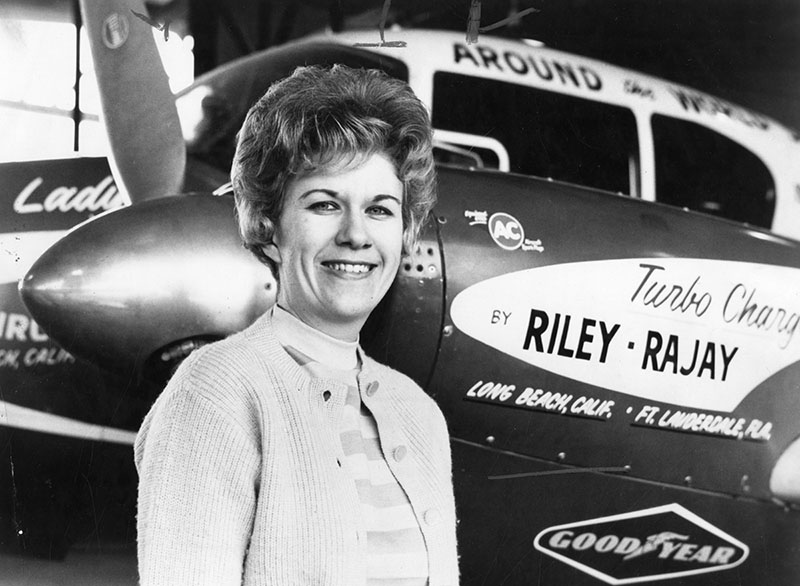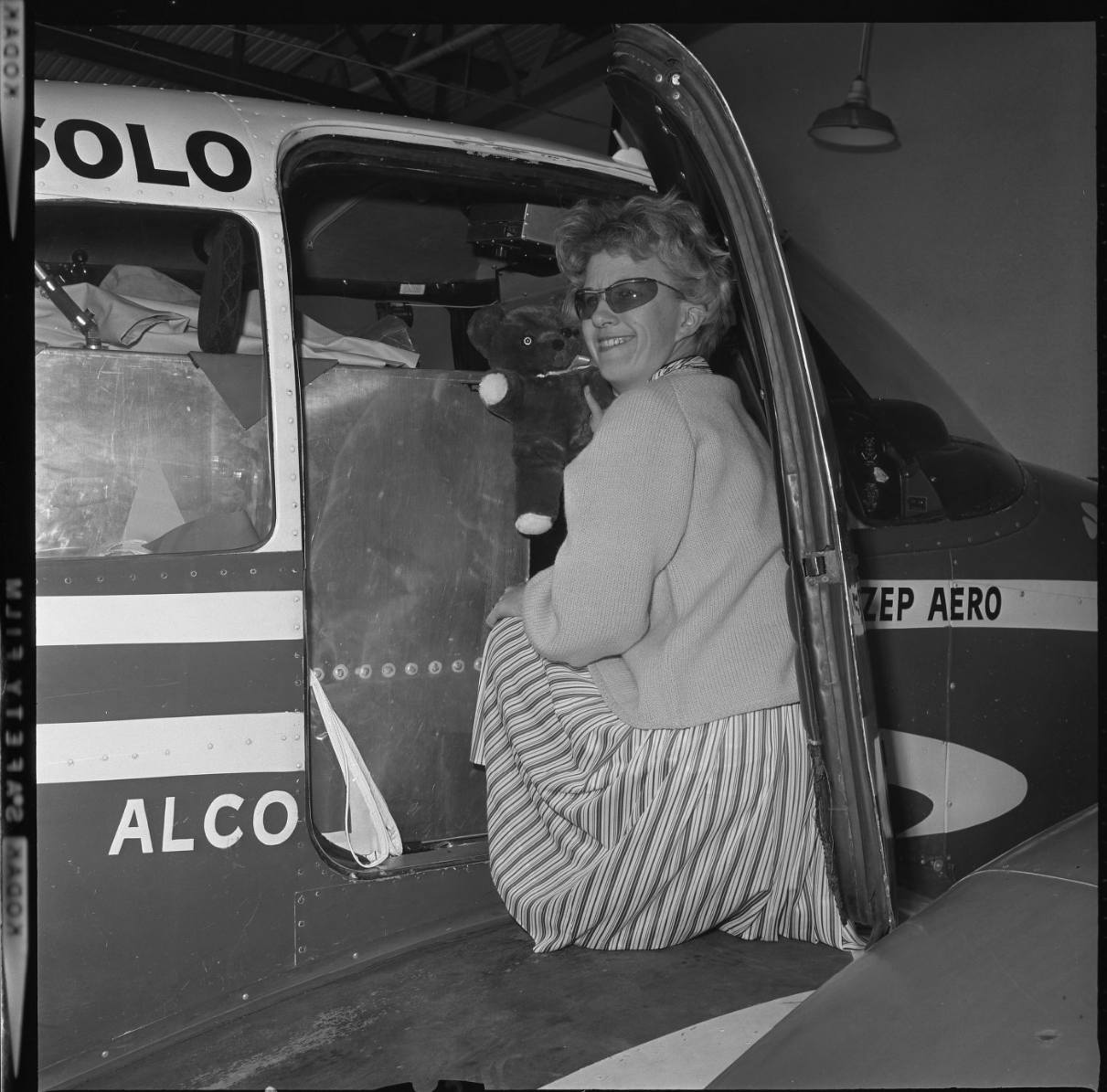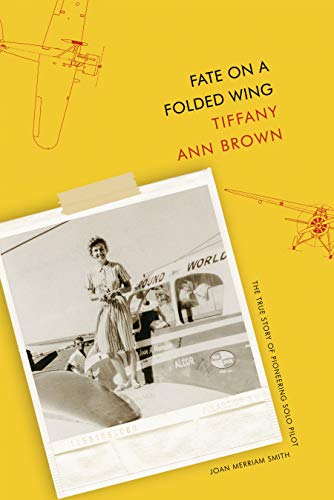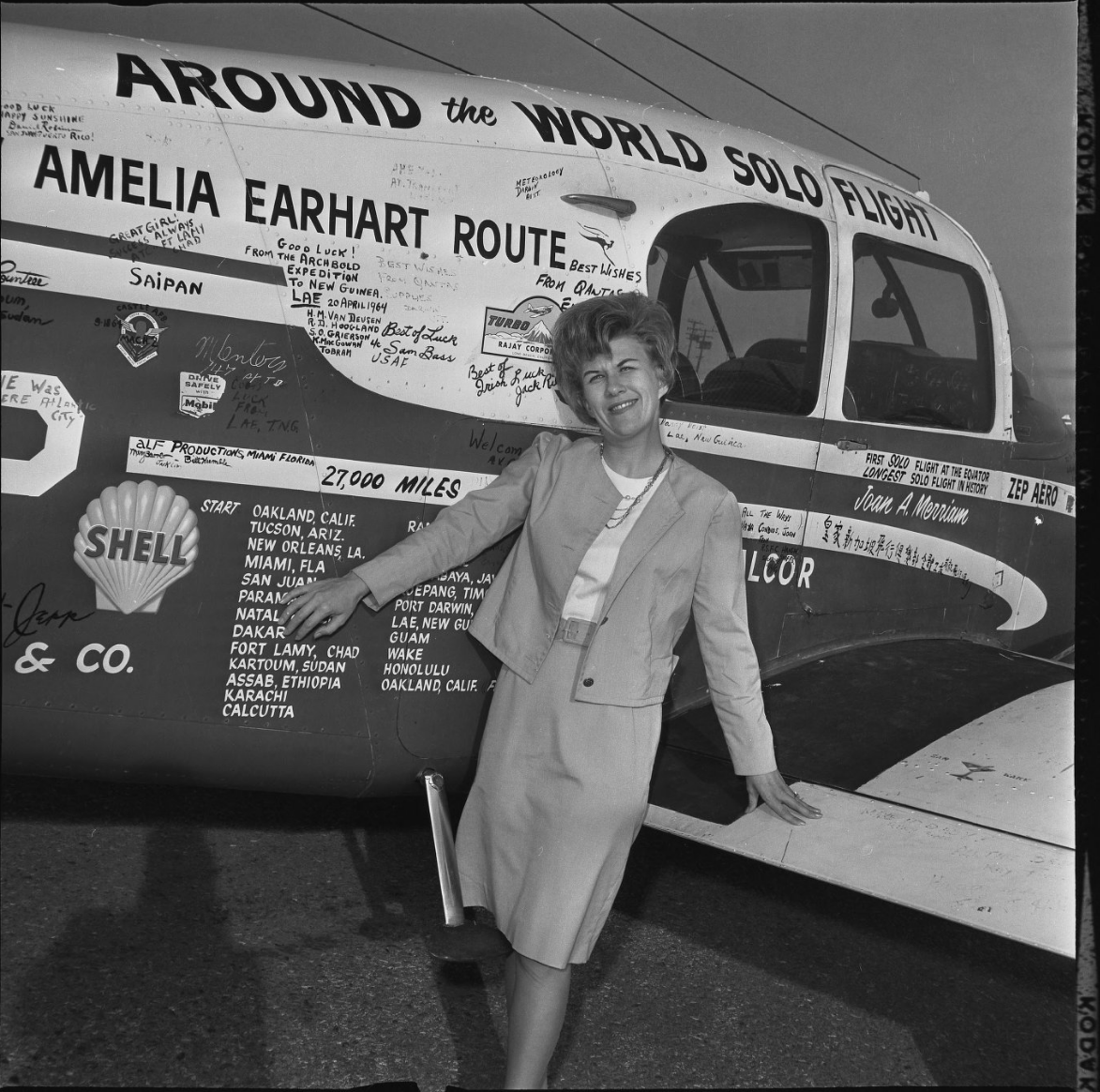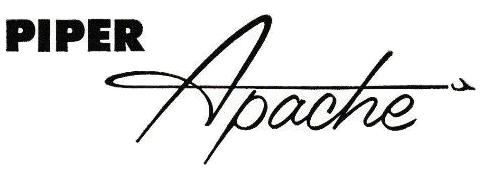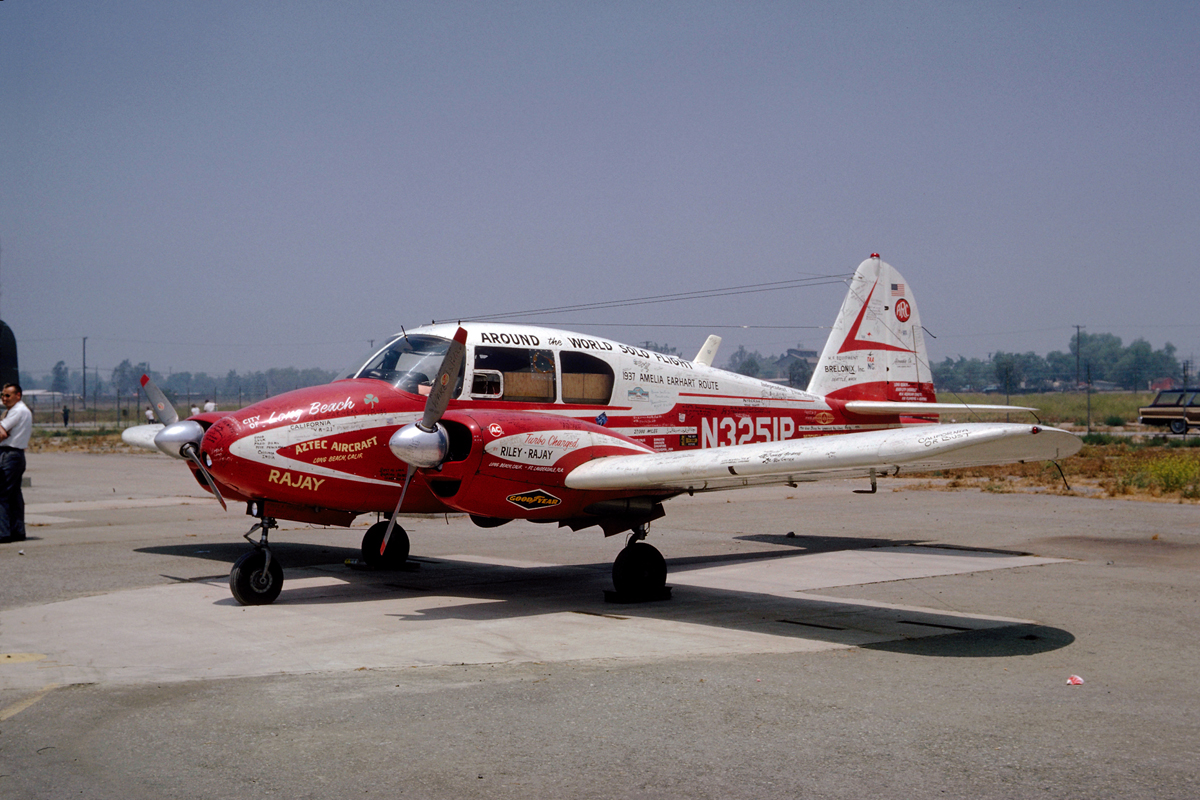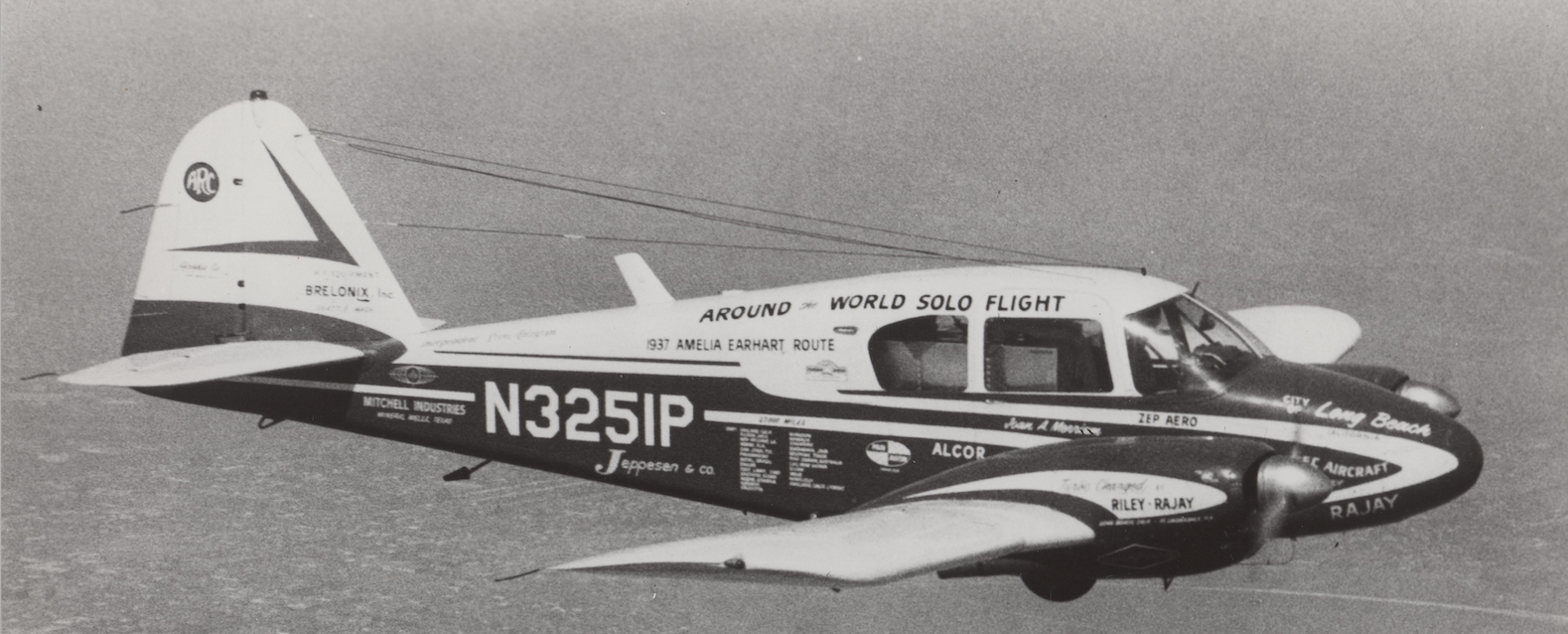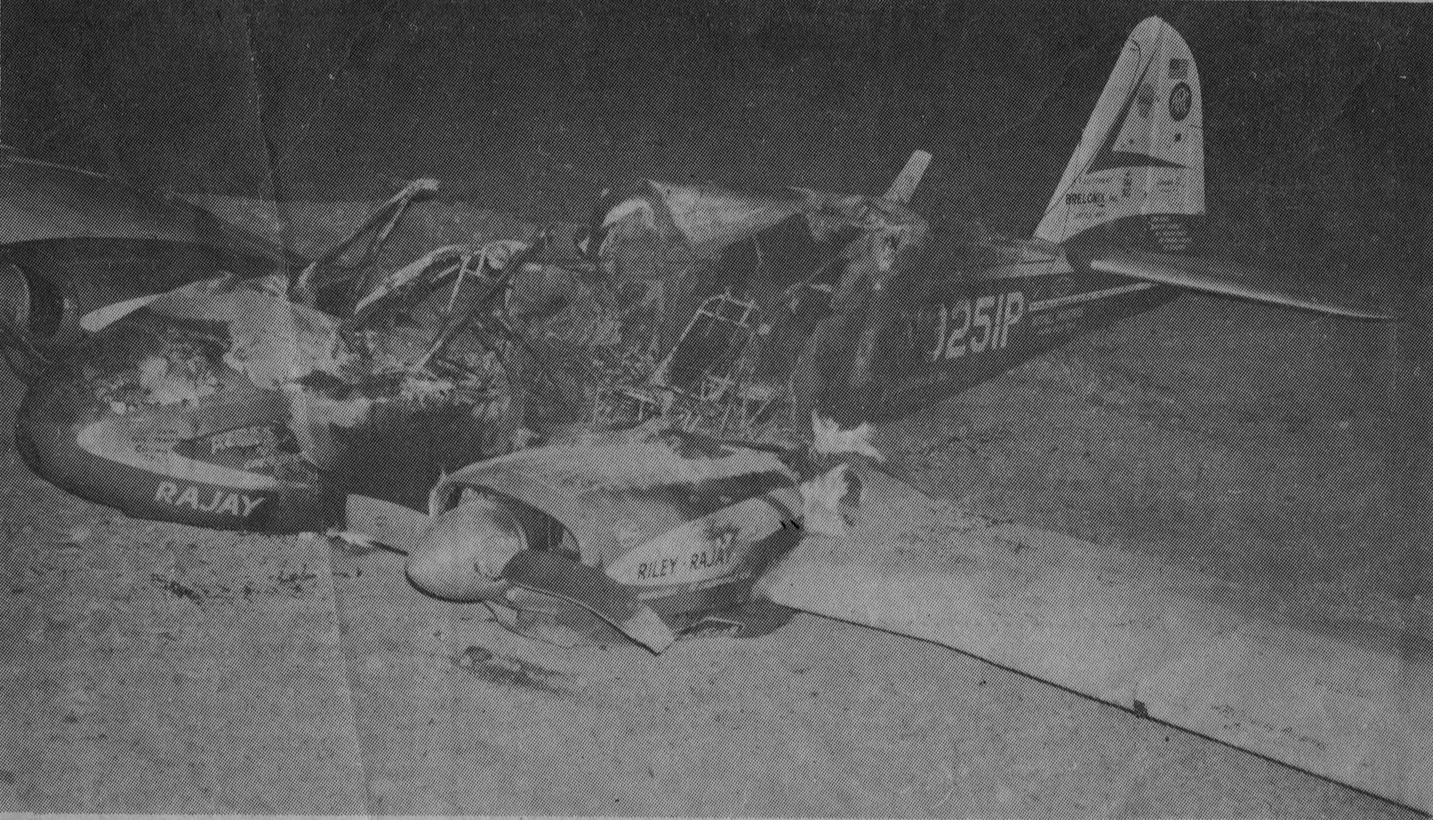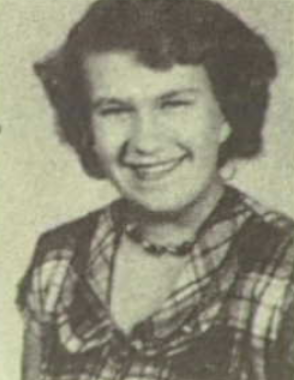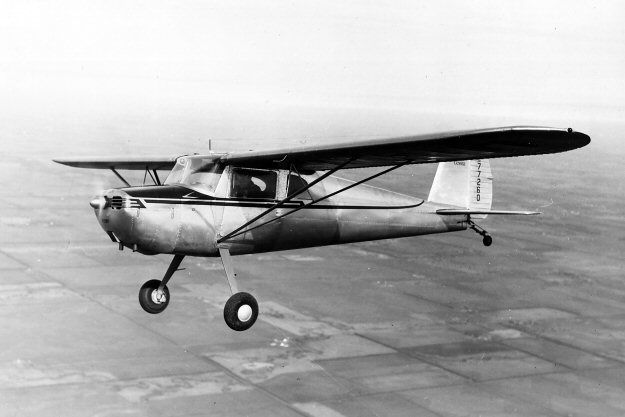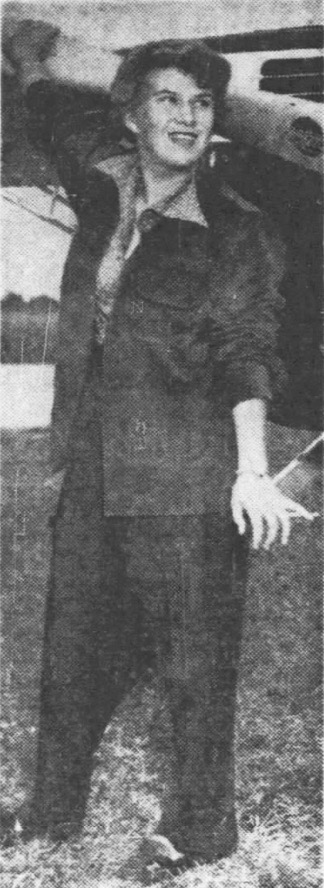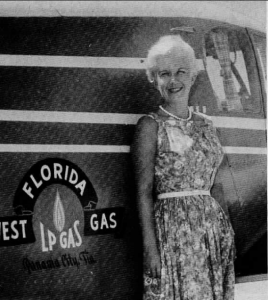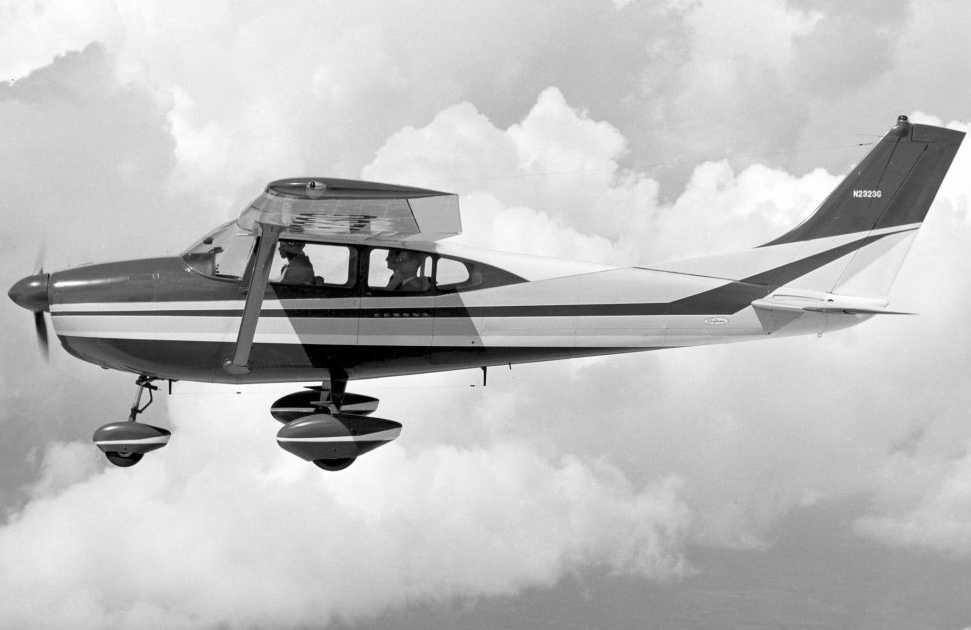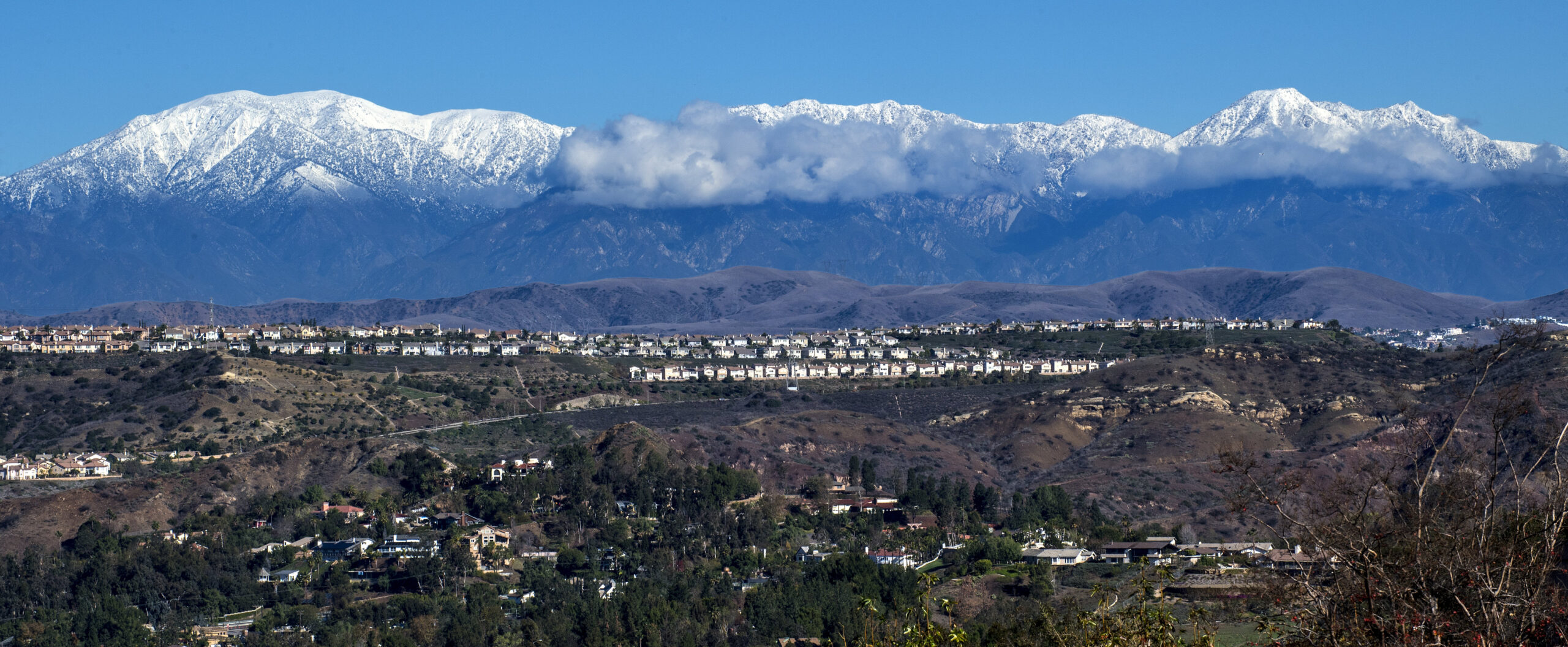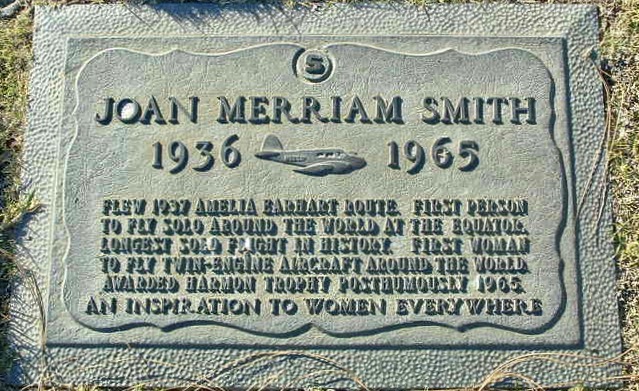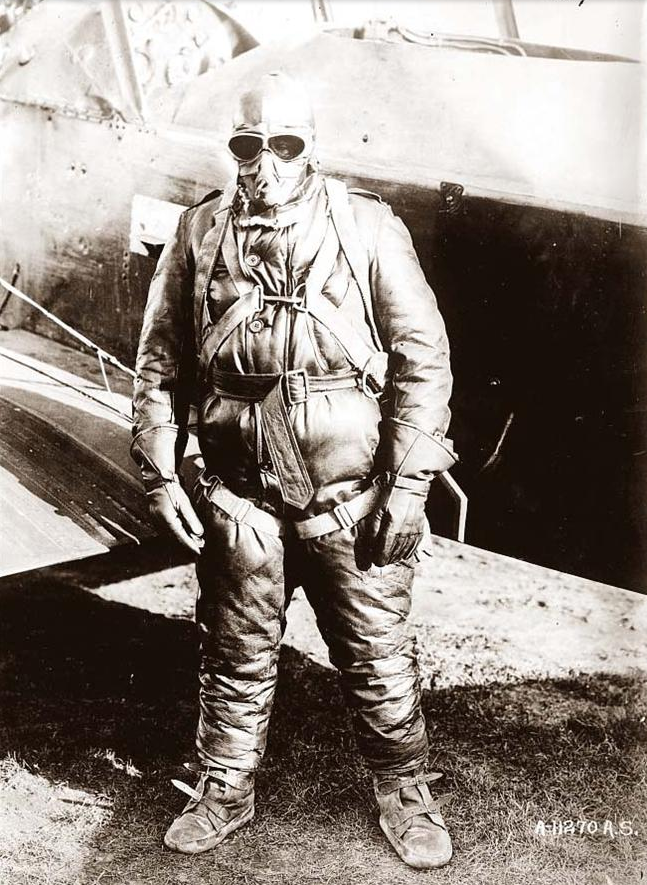
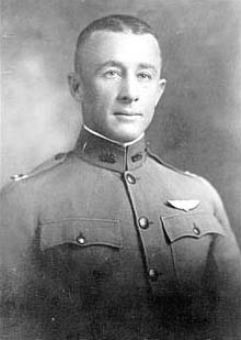
28 September 1921: At McCook Field, Ohio, First Lieutenant John Arthur Macready, Air Service, United States Army, flew a turbo-supercharged Packard Lepère L USA C. II biplane, serial number S.C. 40015, to a world record altitude of 40,800 feet (12,436 meters). However, the official Fédération Aéronautique Internationale (FAI) is 10,518 meters (34,518 feet.)¹ He won his first of three Mackay Trophies for this flight.
John A. Macready graduated from Stanford University in 1913 with a degree in economics. He enlisted in the Aviation Section, Signal Corps, U.S. Army, as a Private 1st Class, 16 July 1917. On 27 December 1917, he was commissioned as a 1st lieutenant in the Aviation Section, Signal Officers Reserve Corps. Lieutenant Macready became a flight instructor at Brooks Field, Texas, where he wrote the standard instructional text. On 11 October 1918, Lieutenant Macready was promoted to the rank of captain. After World War I, he became an engineering test pilot at McCook Field near Dayton, Ohio. He reverted to his permanent rank of first lieutenant, 18 September 1920. In 1923, Macready graduated from the Aeronautical Engineer Course, Air Service Engineering School.
For six years John Macready was responsible for testing turbosuperchargers, which enabled aircraft engines to produce continuous power at increasing altitudes. It was while testing these that he established his altitude record.
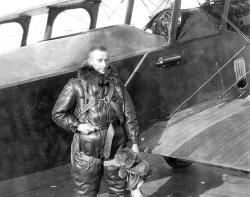
During a 35 hour, 18 minute endurance flight at Rockwell Field, San Diego, California, 5–6 October 1922, John Macready and Oakley G. Kelly pioneered the use of inflight refueling from another aircraft. Also, he and Kelly made the first non-stop transcontinental flight when they flew a Fokker T-2 across the United States from Roosevelt Field, Long Island, New York, to Rockwell Field in 26 hours, 50 minutes, 38.6 seconds, 2–3 May 1923. Macready won his second and third Mackay Trophies for these achievements. He is the only man to have won it three times.
The Packard Lepère L USA C.II was a World War I biplane designed by French aeronautical engineer Captain Georges Lepère and built by the Packard Motor Car Company of Detroit, Michigan. It was to have been a two-place fighter, light bomber and observation aircraft armed with four machine guns.
The Packard Lepère was 25 feet, 3-1/8 inches (7.699 meters) long. The upper and lower wings had an equal span of 41 feet, 7¼ inches (12.681 meters), and equal chord of 5 feet, 5¾ inches (1.670 meters). The vertical gap between the wings was 5 feet, 5/8-inch (1.527 meters) and the lower wing was staggered 2 feet, 15/16-inch (0.633 meters) behind the upper wing. The wings’ incidence was +1°. Upper and lower wings were equipped with ailerons, and had no sweep or dihedral. The height of the Packard Lepère, sitting on its landing gear, was 9 feet, 7 inches (2.921 meters). The Packard Lepère had an empty weight of 2,561.5 pounds (1,161.9 kilograms) and its gross weight was 3,746.0 pounds (1,699.2 kilograms).
The fuselage was a wooden structure with a rectangular cross section. It was covered with three layers of veneer, (2 mahogany, 1 white wood) with a total thickness of 3/32-inch (2.38 millimeters). The fuselage had a maximum width of 2 feet, 10 inches (0.864 meters) and maximum depth of 4 feet, 0 inches (1.219 meters).
The wings were also of wooden construction, with two spruce spars and spruce ribs. Three layers of wood veneer covered the upper surfaces. Heavy bracing wires were used. These had an airfoil cross-section and actually provided additional lift. The interplane struts were unusual in that they were fully-framed units.
The Packard Lepère was powered by a water-cooled, normally-aspirated, 1,649.336-cubic-inch-displacement (27.028 liter) Liberty L-12 single overhead cam (SOHC) 45° V-12 engine with a compression ratio of 5.4:1. The Liberty produced 408 horsepower at 1,800 r.p.m. The L-12 as a right-hand tractor, direct-drive engine and it turned turned a two-bladed, fixed-pitch wooden propeller. The Liberty 12 was 5 feet, 7.375 inches (1.711 meters) long, 2 feet, 3.0 inches (0.686 meters) wide, and 3 feet, 5.5 inches (1.054 meters) high. It weighed 844 pounds (383 kilograms).
The engine coolant radiator was positioned horizontally in the center section of the Lepère’s upper wing. Water flowed through the radiator at a rate of 80 gallons (303 liters) per minute.
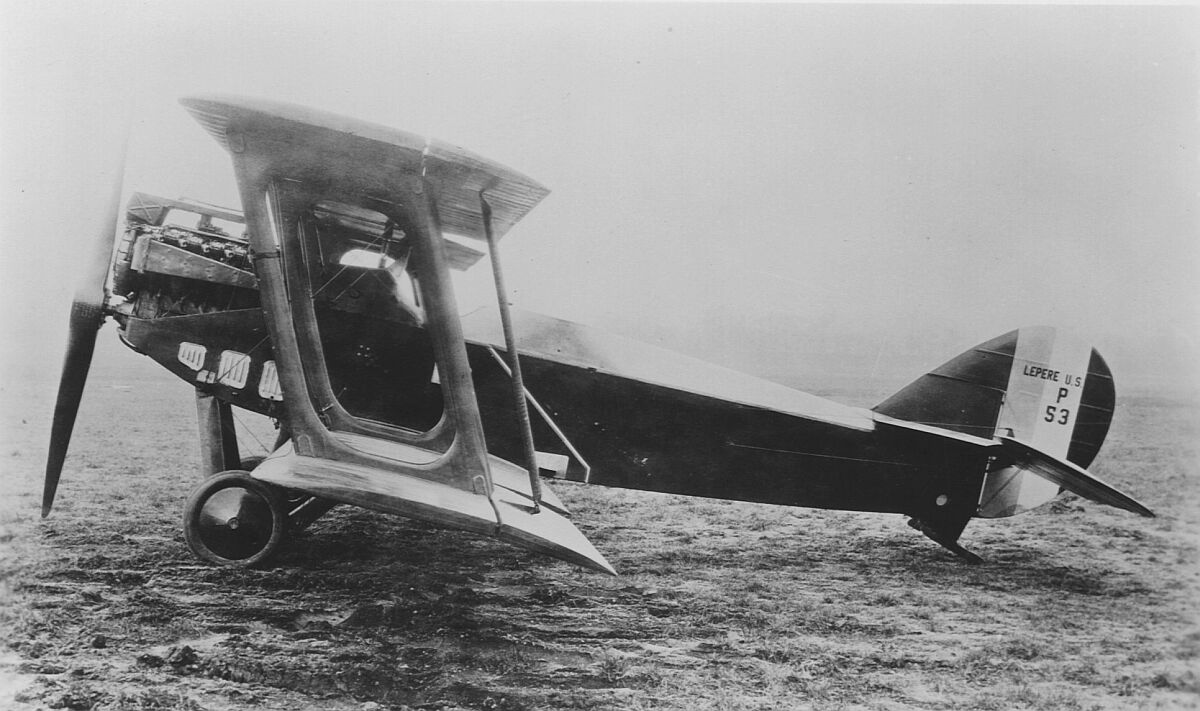
The Packard Lepère had a maximum speed of 130.4 miles per hour (209.9 kilometers per hour) at 5,000 feet (1,524 meters), 127.6 miles per hour (205.4 kilometers per hour) at 10,000 feet (3,048 meters), 122.4 miles per hour (197.0 kilometers per hour) at 15,000 feet (4,572 meters), 110.0 miles per hour (177.0 kilometers per hours) at 18,000 feet (5,486 meters) and 94.0 miles per hour (151.3 kilometers per hour) at 20,000 feet (6,096 meters). Its cruising speed was 112 miles per hour (180 was kilometers per hour). The airplane could climb to 5,000 feet in 4 minutes, 24 seconds, and to 20,000 feet in 36 minutes, 36 seconds. In standard configuration, the Packard Lepère had a service ceiling of 20,200 feet (6,157 meters). Its range was 320 miles (515 kilometers).
The fighter’s armament consisted of two fixed M1918 Marlin .30-caliber aircraft machine guns mounted on the right side of the fuselage, synchronized to fire forward through the propeller arc, with 1,000 rounds of ammunition, and two M1918 Lewis .30-caliber machine guns on a flexible mount with 970 rounds of ammunition.
The Air Service had ordered 3,525 of these airplanes, but when the War ended only 28 had been built. The contract was cancelled.
Six Packard Lepères were used for flight testing at McCook Field, Dayton, Ohio, assigned project numbers P 44, P 53, P 54, P 65, P 70 and P 80. One of these, flown by Major Rudolph W. Schroeder, set two Fédération Aéronautique Internationale (FAI) World Records for Altitude at 9,455 meters (31,020 feet), 18 September 1918.² On 6 September 1919, Schroeder flew a Packard Lepère to 8,616 meters (28,268 feet) while carrying a passenger. This set two more World Altitude Records.³ Flying P 53, A.S. 40015, he set a fifth FAI altitude record of 10,093 meters (33,114 feet), 27 February 1920.⁴ On 28 September 1921, Captain John A. Macready flew P 53 to an altitude of 40,800 feet (12,436 meters). On 13 October 1922, 1st Lieutenant Theodore J. Koenig flew P 53 to win the Liberty Engine Builders’ Trophy Race at Selfridge Field, near Mount Clemens, Michigan. Koenig completed ten laps of the triangular racecourse in 2:00:01.54, at an average speed of 128.8 miles per hour (207.3 kilometers per hour).
The only Packard Lepère in existence, serial number A.S. 42133, is in the collection of the National Museum of the United States Air Force, Wright-Patterson Air Force Base, Ohio.
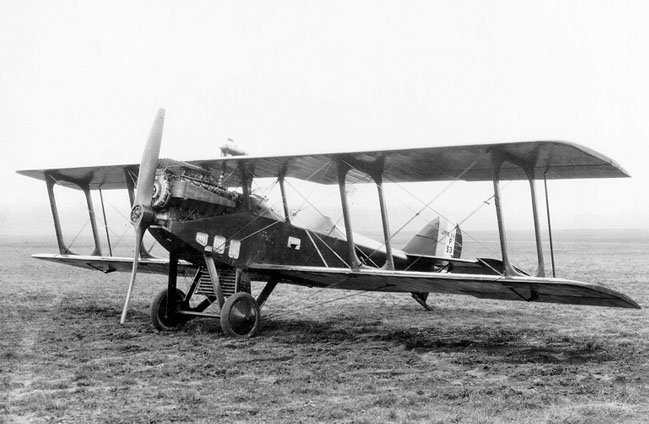
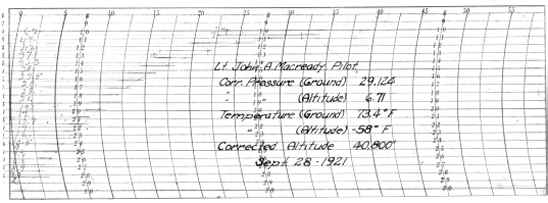
¹FAI Record File Number 8381
²FAI Record File Number 15463
³ FAI Record File Number 15671
⁴ FAI Record File Number 8229
© 2017, Bryan R. Swopes
